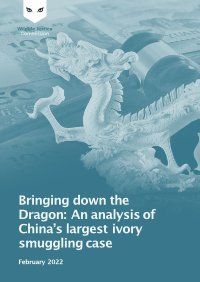By Serene C.L. Chng, Salman Saaban, Anongrakh Wechit, Kanitha Krishnasamy
Although the Oriental Magpie-robin Copsychus saularis is still a commonly seen species in many parts of Malaysia, high demand for it as a cage bird domestically and in neighbouring countries has resulted in trapping and smuggling of Malaysian populations. Analysis of seizure data for this species, as it implicated Malaysia, shows an escalation of international trafficking in recent years to feed the persistent demand for the pet trade. Overall, at least 26,950 Oriental Magpie-robins were seized from 44 incidents that implicated Malaysia from January 2015–December 2020, averaging at least 613 birds per seizure. These seizures took place in Indonesia, Malaysia and Singapore. Of these, Malaysian and Indonesian authorities definitively reported that 17,314 (64%) birds were being smuggled from Malaysia to Indonesia. This points to Malaysian populations of the Oriental Magpie-robin being increasingly targeted to feed demand in neighbouring countries, particularly Indonesia. At least 17,736 (66%) of all birds were confiscated in just 2020, signifying a current and possibly growing problem. This could be due to an increase in enforcement effort, coupled with dwindling populations in parts of Indonesia to supply birds for trade. A total of 23 seizures occurred in Malaysia, all were confined to the states of Johor, Melaka, Sarawak and Sabah involving a total of 17,997 birds. Most incidents in the first three states pointed to cross-border smuggling (the case in Sabah was a confiscation on premises). In eight of the Malaysian seizures, where birds were being trafficked to Indonesia, at least 16 Indonesian nationals were arrested, strongly suggesting networks of smugglers moving birds between the two countries. Many of these were reported to be illegal immigrants, indicating an additional national security concern.
TRAFFIC, Southeast Asia Regional Office, Petaling Jaya, Selangor, Malaysia: 2021. 20p.





